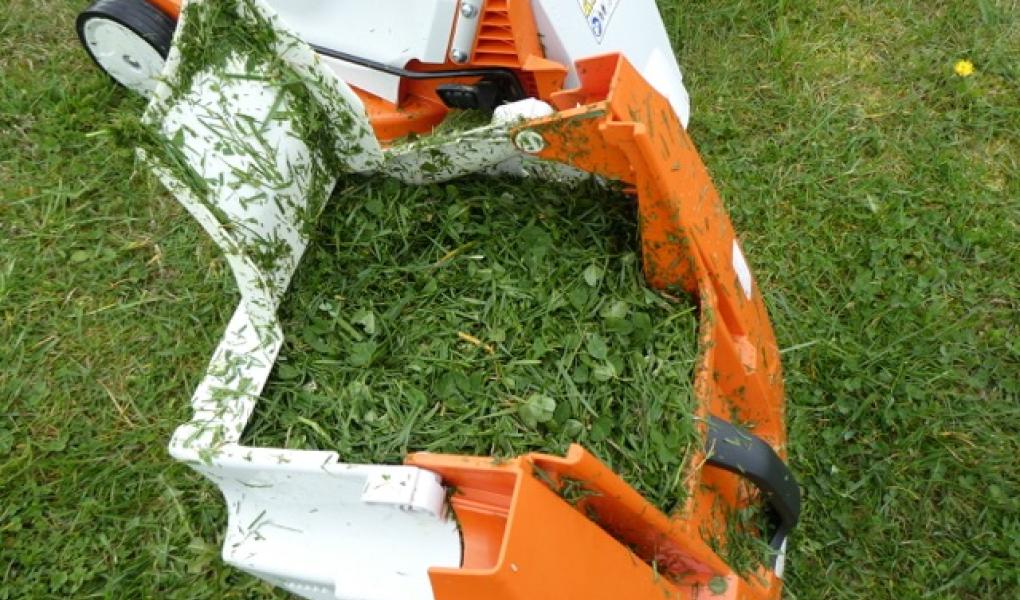A well-mowed lawn is the pride of many garden owners, whether it is as large as a golf course or just a small green patch to grill on after work. But a lot of work goes into keeping the grass short and well-maintained, and it's important to choose the right machine for the job.
Electric lawn mowers are noise-free, weigh less than their gasoline counterparts, and are easy to maneuver. They are also environmentally friendly, and you avoid sweating in the fuel fumes of gasoline mowers. The electric mowers also emit less vibration and are therefore more gentle on the arms. Finally – and an aspect that can be just as significant – you avoid the embarrassment of standing in the driveway pulling the start cord on a machine that only coughs and smokes after a half-year overwintered in the garage. With a battery-powered electric lawn mower, you just insert the charged battery and go.
To evaluate battery-powered electric lawn mowers, Testfakta assigned the independent test laboratory SLG in Germany. The laboratory evaluated the lawn mowers based on various factors such as the quality of the mowing, how fast they mow, battery performance, and overall ease of use.
[PDF]
Husqvarna mows the fastest, Gardena the most evenly
One of the most important aspects when choosing a lawn mower is, of course, how nice one's lawn looks after mowing. However, the test showed that several of the machines leave a fairly uneven surface behind, where Ryobi and Jula give the worst result. Both cut unevenly, and Ryobi also misses several spots on the lawn. The finest mowing result is instead obtained with the lawn mower from Gardena. However, it is quite slow, something that can be perceived as disturbing if you want to be efficient. Husqvarna is the fastest, able to mow up to 742 sqm per hour. Husqvarna, however, switches between different power modes and therefore leaves a somewhat uneven mowing pattern behind. Stihl, along with Jula, is the slowest and can only mow 615 and 590 sqm per hour, respectively, and Stihl also has a tendency to shut down in longer grass.
Big difference in operating time and charging time
Another crucial point is the performance of the included battery. Although the tested machines' batteries have roughly the same capacity (between 4-6 Ah), the results in operating time differ significantly. The test shows that the worst machines can only mow for 12-13 minutes before it's time to charge the battery, which in area means just over 130 sqm. Husqvarna performs best in terms of capacity and provides up to 250 sqm of mowed lawn, equivalent to just over 20 minutes on one battery.
- The difference in operating time is primarily due to the design of the cutting blade, the construction of the mowing cap, and of course the motor's efficiency, says Martin Kirschen, testing engineer at SLG.
If you have a larger lawn, one battery may not go very far.
- I would say that you need one, and in some cases two extra batteries to be able to mow the entire lawn efficiently with most of the machines, he continues.
Several batteries are required to avoid long waiting times
He also notes that there is a remarkably large difference between the batteries' measured charging time, from the efficient Makita's just under an hour to Gardena's nearly four hours. With Gardena, it therefore takes a whole day to mow a small lawn of 300-400 square meters with just one battery. The reason for the different charging times depends on how efficient the charger is rather than on the battery itself. At the same time, you avoid the problem of long charging time if you buy several batteries.
No model gets full marks in all aspects of the test, and in most cases, you must choose between speed, battery life, and the quality of the mowing result. Overall, Husqvarna gets the highest rating thanks to good mowing efficiency and battery capacity, reasonable charging times, high ease of use, and simple assembly. Close behind comes the most expensive lawn mower in the test from Makita, which despite leaving some residue on the lawn still gets a high overall rating thanks to efficient mowing, relatively high mowing capacity, and fast battery charging. The low-cost model from Jula places at the bottom due to its slow cutting speed and uneven results.







